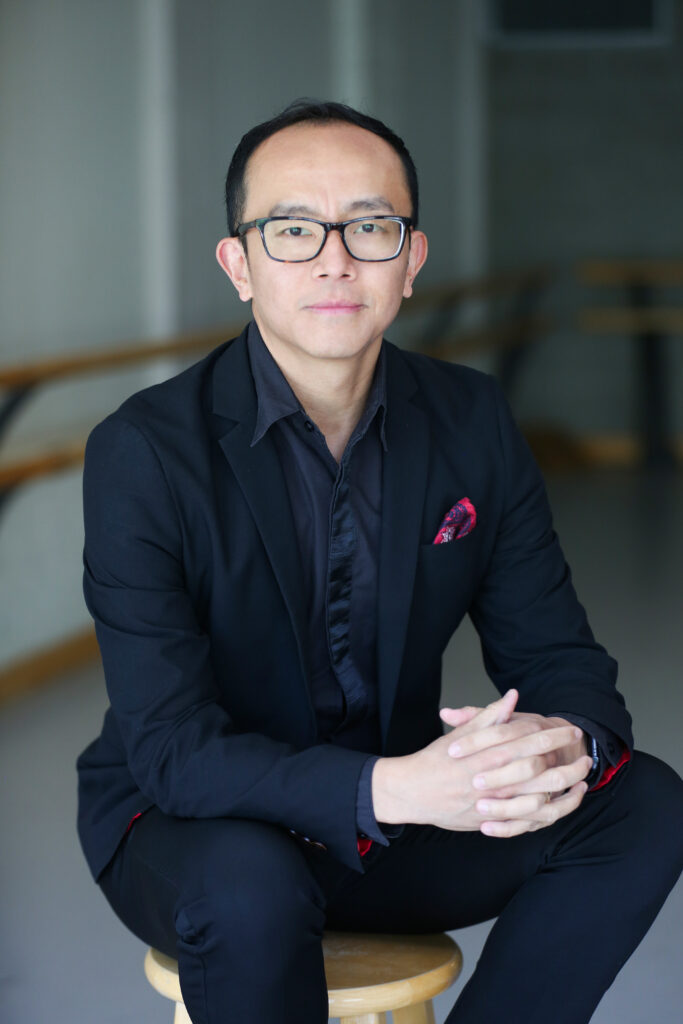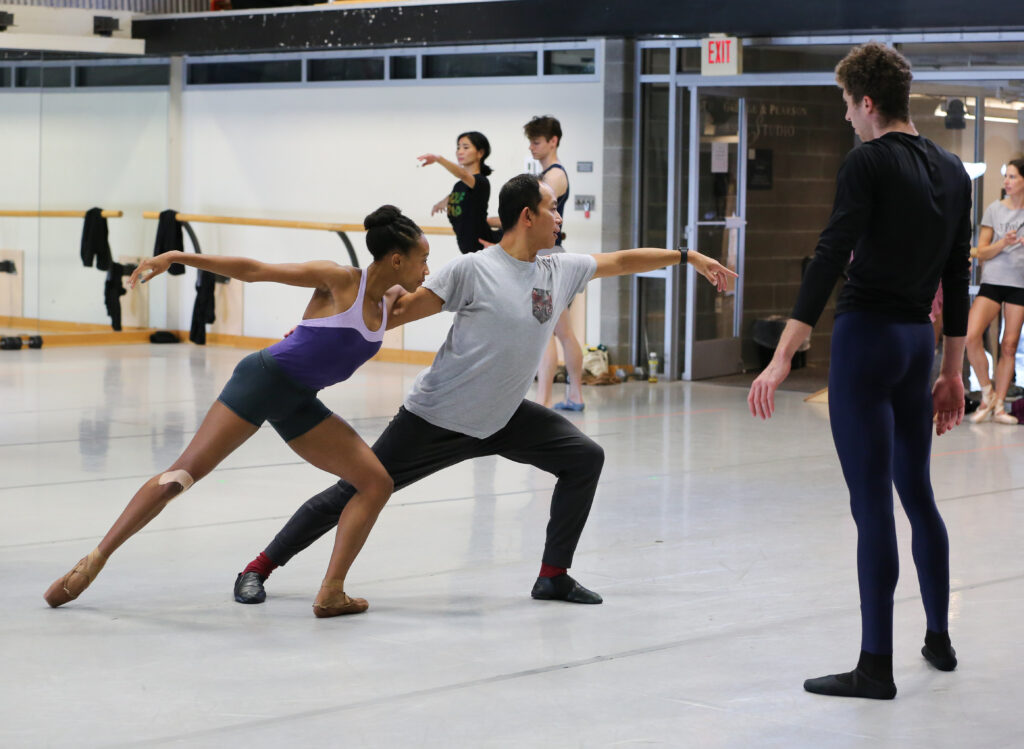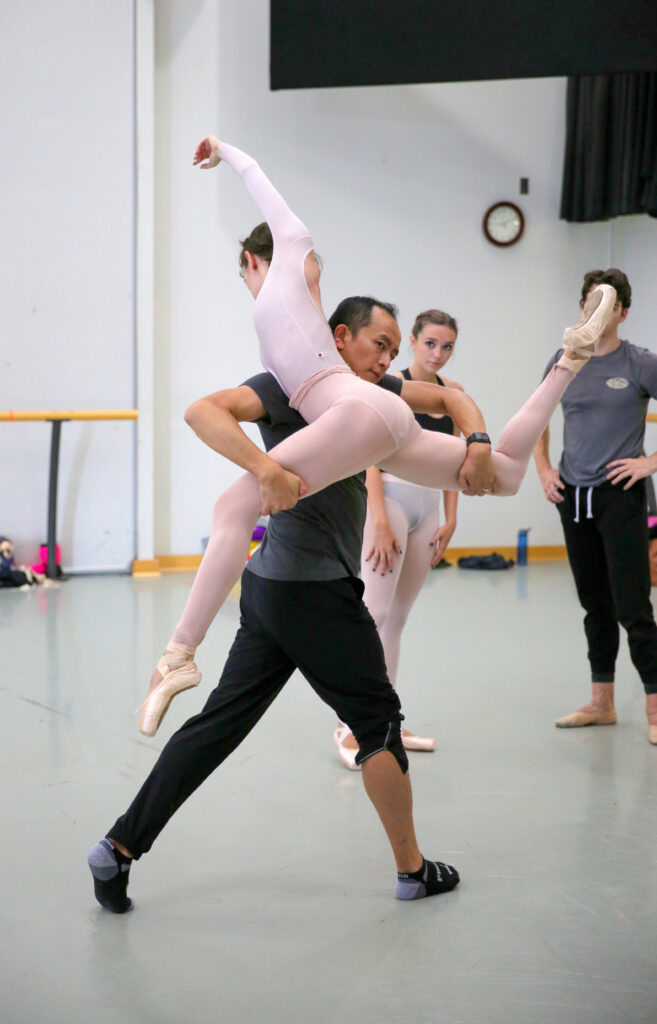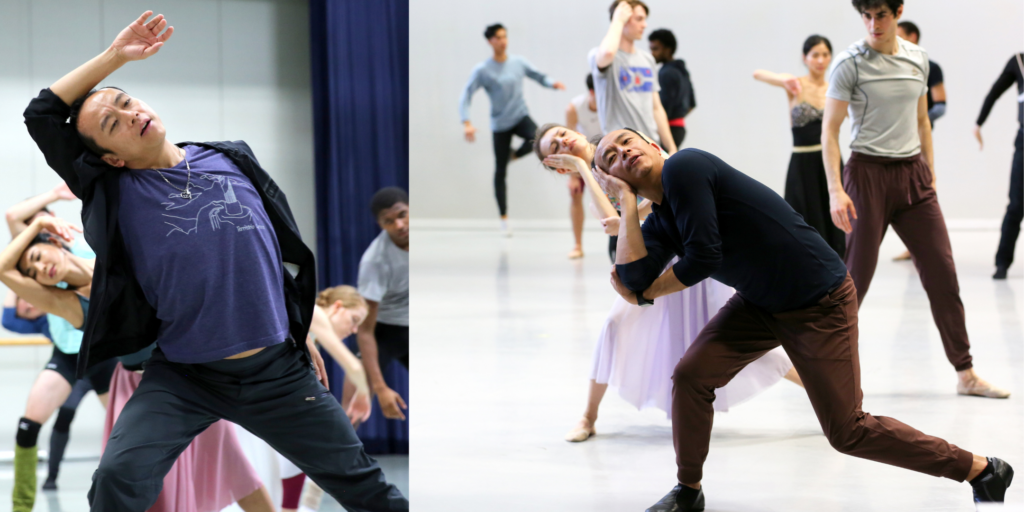New company leaders sometimes stake their claims with wide-sweeping changes to programming and rosters. But an “out with the old, in with the new” mentality is hard to execute at a ballet company where the outgoing party is a beloved founding artistic director—one who steered the organization for 44 years.

Such is the case at Richmond Ballet, where longtime director Stoner Winslett stepped down this year on July 1. Pointe recently interviewed Winslett about her transition, and she admitted that she had begun the search for the right person to replace her in the early 2000s.
Ma Cong, former Tulsa Ballet dancer and resident choreographer, became that person—but not right away. In an unusual arrangement, Ma was named associate artistic director in 2020, with the intention that he would learn the ropes and be given new responsibilities throughout the four-year period before succeeding Winslett. (The two weathered COVID working side by side.) As Ma himself would describe it, the directorship change has been more of a mentorship process than a “taking over.”
Ahead of the 2024–25 season kicking off this September, Pointe caught up with Ma to discuss his new role.
What has it been like transitioning from associate artistic director to artistic director? It seems like Winslett’s could be big shoes to fill.
I think things can be innovative, fresh, and energized, and have this transformation without losing something. The transition process at Richmond Ballet has been a privilege—to meet every single one of the employees working for this company, to get to know the patrons and trustees and how much dedicated work they have done for the organization, to say thank you. I think that’s important, rather than being thrown into a job right away. So it has been very fulfilling and positive.
And Stoner is not just the outgoing director of the company. She is also a friend. Her mentorship is beyond passing along what she knows about this organization. It’s also passing on her personal integrity and her love and support. I think that’s what I learned the most from Stoner: how much she cares about people. She thinks bigger than herself.

How will you build upon Winslett’s vision and make it your own?
Bold, elegant, and diverse. That’s the style, the look, I would love for the company to have. Program-wise, I have always believed that professional dancers deserve to be challenged, to have a wide range from classical ballet to the contemporary. So I want to bring fuller and bigger productions of classical ballet, to challenge our dancers and give our audiences something they haven’t been able to see. For the 2023–24 season, I brought Ben Stevenson’s Dracula, which had never been shown in Richmond. The dancers had to push their classical technique really high to be able to perform this production. And the result was that we sold out all five shows.
I also want to bring in works by many more world-leading choreographers. For example, next year I’m bringing Christopher Wheeldon’s After the Rain. I will do a lot of research and more work in the community here in Richmond to find people who would love to create something beautiful together.

Could you speak more about that third word in your vision, “diversity”?
It’s really important for audiences to resonate, to see themselves when our company is presented onstage. It’s also very important for the students—our Minds in Motion students, for example—to find themselves onstage, too. That can give them such encouragement like I had when I was a little boy [seeing Chinese dancers onstage].
You’ve made some very big career moves from China to Tulsa and Tulsa to Richmond Ballet. What have you carried with you from dancing to choreographing to directing?
Life is really a journey! When I was a young dancer, I dreamed of exploring my career as a dancer and also exploring my personal life at the same time. In China, it’s still very hard for artists if you want to be true to yourself. You and I talked a little bit on the phonefor my [2019 Tulsa Ballet premiere] Tchaikovsky: The Man Behind the Music. The reason I took on that project is because the concept of that ballet is almost a line from my own story, as a Chinese man and as a gay man, trying to be brave, to be myself.
The number one thing as artists, I believe, is that we have to be brave. We need to have our voice. I am very passionate about using my voice to create or to bring works that can engage people and make them understand that there are no borderlines. One takeaway I had from working with [the opera director] Julie Taymor in 2017 for [the Broadway production of] M. Butterfly was when she said, “Ma, in any kind of production, just remember, good is good.”
You know, good is good. Bring the good stuff to inspire people. But it has to be good.

